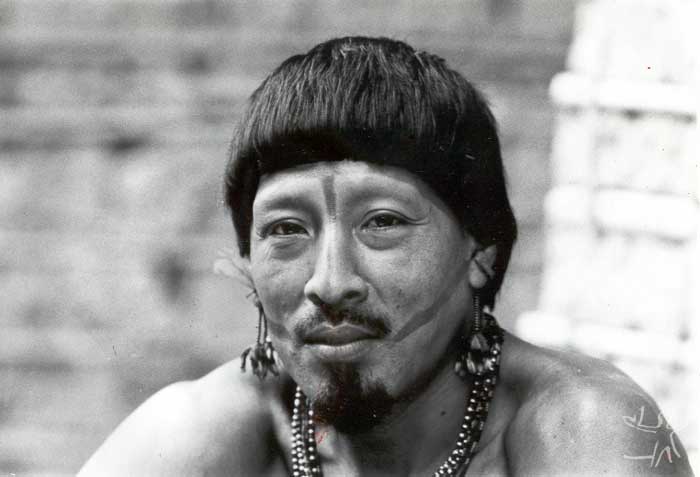Brazil turned 500 in 2000 and still ignores the immense diversity of the Indigenous peoples living in its territory. It is estimated that, at the time the Europeans first arrived, there were more than 1,000 denominations, with a total of between 2 and 4 million people. Today they are 256 peoples , speaking more than 150 different languages and adding up to 896.917 individuals (IBGE, 2010).
The majority of this population is distributed among thousands of villages located within Indigenous Lands (TIs) – spread throughout the national territory.
In order to contribute for the knowledge about and respect for these populations, this site of the Instituto Socioambiental (ISA) presents updated and qualified information on the different Indigenous peoples that live in contemporary Brazil through introductory texts, photographs, news, analyses, maps, illustrations, lists, tables and indications of additional information sources.
This material is the result of more than 25 years of research, started by the Centro Ecumênico de Documentação e Informação (CEDI), continued by our staff’s daily work and supported by a vast network of ISA’s collaborators.
Today, talking about Indigenous peoples in Brazil means to recognize basically that:
- In the lands colonized by the Portuguese, where later a country called Brazil would exist, there were already human populations;
- It is not known exactly where they came from; we say that they are ‘original’ or ‘native’ because they were here before the European occupation;
- Certain groups of people who live in present-day Brazil are historically connected to these early peoples;
- The Indians who live in Brazil today have a long history, which started to differentiate itself from the so-called Western Civilization still during Pre-History (with the migratory waves from the ‘Old World’ to the Americas that took place thousands of years ago); ‘their’ history has come closer to ‘ours’ only in the past 500 years (with the arrival of the Portuguese);
- Like any other human group, Indigenous peoples have cultures that result from the history of the relationships among themselves and between them and the environment; a history that, in their case, has been (and continues to be) dramatically altered by the reality of colonization;
- The territorial division of South America into countries (Brazil, Venezuela, Bolivia, Argentina…) does not necessarily coincide with the occupation of the geographic space by the Indigenous population; often there are cases of peoples who live on two sides of international borders, which were created long after they were established in the region; that is why it makes more sense to speak of Indigenous peoples ‘in Brazil’ than ‘of Brazil’.
Indians, Amerindians
Generically, the Indigenous peoples that live not only in Brazil but also in the entire American continent are called Indians. This name is the result of a historical mistake made by the first Europeans who arrived in America, who thought they had reached India. The continuous use of the word, even by the Indians themselves, has made it a synonym of an Indigenous person in Brazil.
Because of the similitude among Indians from North, Central and South America, there are those who prefer to call all of them Amerindians. Indians or Amerindians are thus the indigenous peoples of the Americas. But what is it that makes of an Indian an Indian?
Criteria of identification

In the perspective of those who already lived in a given area, the historical process of colonization and constitution of new nations was extremely violent: extinction of entire peoples, demographic decimation, land seizures, destruction of traditional means of physical and cultural survival, disappearance of particular ethnic identities within the new national societies in formation…
After such a long time, so much oppression and, in many cases, miscegenation, there is a problem regarding Indigenous peoples: how is it possible to identify clearly persons and groups of persons who are native to these places and those who are not?
The answer to this fundamental question is not simple. It has to do with recognition of special rights, the struggle for compensations for historical injustices, and conflicts of interests regarding the possession of certain areas or to the exploration of natural resources. It belongs, in short, to the realm of politics: of each individual country and also of international organisms such as the United Nations, the International Labor Organization or the Organization of American States.
Documents from different times, countries and institutions show different criteria for identifying who is Indigenous, based in concepts such as race, cultural traits or economic development. In Brazil, the most accepted criterion nowadays is that of ethnic self-identification. In other words: it is considered Indigenous the members of a group of people who identify themselves as a collectivity distinct from the national society as a whole due to their historical links to pre-Columbian populations (i.e., populations that existed before Columbus first arrived in America, in 1492). Every individual who recognize herself/himself as part of a group with those characteristics and is recognized by the group as such may be considered an Indigenous person.


